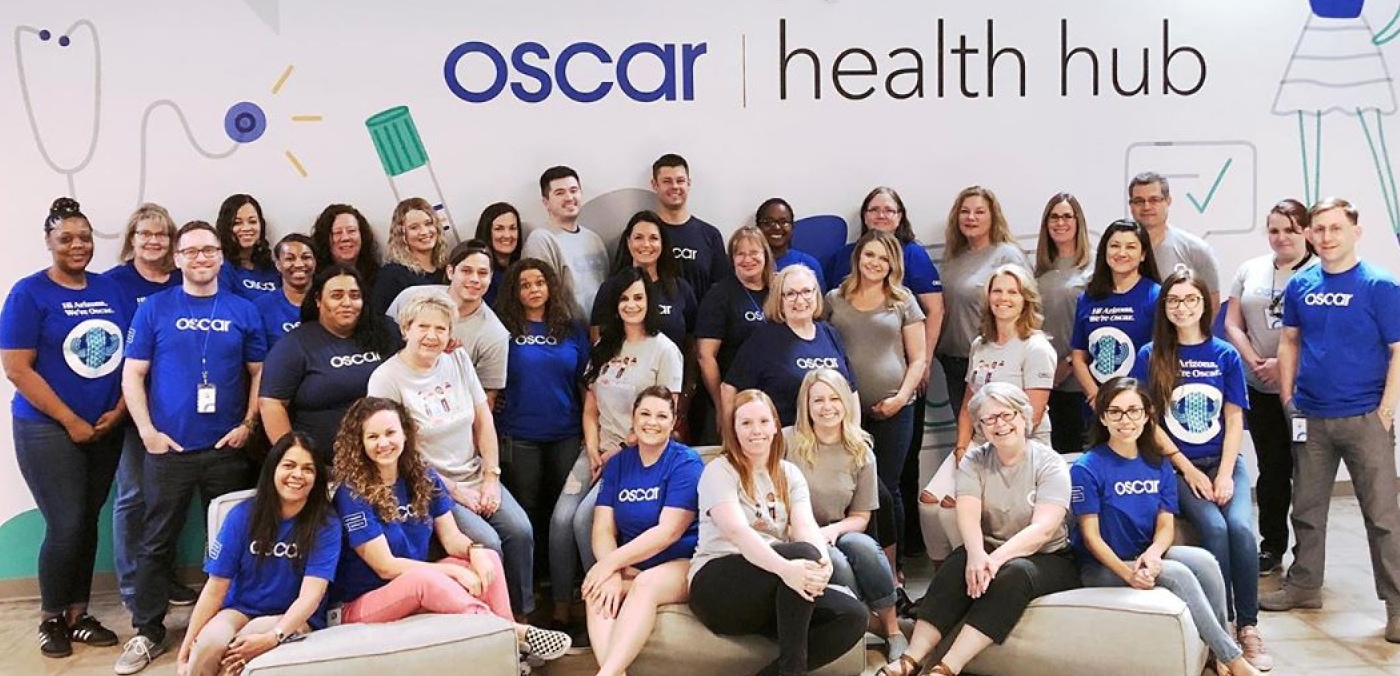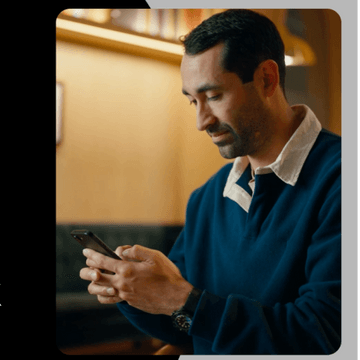In March 2020, U.S. healthcare systems went into overdrive in response to Covid-19. Oscar Health, a direct-to-consumer health insurance company, was at the forefront of the sprint to start up new services and testing. On March 6, Oscar launched a risk assessment survey and then a testing center locator for free, public use. The tools, which typically would have taken months to put online, were available within a matter of days.
From conception to reality, the production process drew in multiple tech teams as well as employees from operations, government regulations and customer service, according to Duncan Greenberg, the company’s senior director of product. “We definitely expedited our normal product development process to the point of almost circumventing it,” he says. “And yet we were able to create something that required contributions from a huge number of people.”
The real kicker? Both products launched during shelter in place, and most of the strategizing took place in Slack. “A lot of that rapid-fire collaboration happened within channels because all of a sudden we were all remote,” Greenberg says. “Slack certainly made it easier for us to make decisions quickly and communicate them to everyone who needed to know.”
Even before Covid-19, Oscar was a pioneer in digital health services. Since its founding in 2012, the company has fine-tuned its own platform to serve 420,000 members, and Oscar plans to expand from 29 to 47 markets in 2021, pending regulatory approval. The company’s members not only widely use its platform (83% of members were in contact with their care teams in 2019), they’re also satisfied with the service: Oscar’s Net Promoter Score is 36, compared with an industry average of -12 for Affordable Care Act providers.
To keep members healthy and happy, Oscar must relentlessly improve its technology, coordinate seamless customer service, and keep its more than 1,400 employees engaged and informed. It accomplishes much of this in Slack.


“A lot of that rapid-fire collaboration happened within channels because all of a sudden we were all remote. Slack certainly made it easier for us to make decisions quickly and communicate them to everyone who needed to know.”
Using Slack to secure member information and build better products
Oscar prides itself on being a technology-driven company. Much of that innovation is the result of cross-functional collaboration. So when Sam Gross, a senior technical product manager, kicked off a search for a new collaboration solution, he knew it had to bridge the gaps between engineering, operations and customer service, at a minimum. The company wanted a hosted solution to avoid burdening internal technology teams, and it had to be compliant with the Health Insurance Portability and Accountability Act (HIPAA). “We collaborated closely with Slack’s team on how to stay HIPAA compliant,” Gross says. “During our consideration phase, it became clear that Slack is built for facilitating secure communication across large teams, and that was exactly what we needed.”
The option to add different workspaces, channel groups for teams or departments, with Slack Enterprise Grid gave Oscar’s IT and security teams the flexibility to securely manage their complex organization. For example, the Concierge team, the company’s white-glove customer service arm, works with member data in one workspace, while the doctors who conduct patient calls use another. “We needed to enable fast-paced collaboration internally and share sensitive patient information with doctors securely, and Slack allowed us to do that,” Gross says. Oscar also uses a data loss-prevention solution called Nightfall to monitor Slack channels and automatically delete any messages or images that might inadvertently contain patient information.
Leveraging Slack channels to prioritize the product pipeline
Internally, the transparency of Slack channels enables Gross to watch for inefficient processes and common pain points. “If one Slack message about an issue spawns a thread of 100 more messages, that means it’s important and we might need to build something new,” he says. Gross and other product managers can then spin up a channel with engaged users to get their feedback. “With channels, you can understand the common issues people are running into and build tools to mitigate them,” Gross says.
Greenberg’s team also relies on channels to action feedback. An automated workflow pipes real-time member feedback into channels, such as#web-member-feedback, where product managers suggest and act on new features. “Every member response triggers an API call to Slack and posts the comment with a link to more information,” Greenberg says. “Often, we start threads on feedback and brainstorm design solutions directly within Slack.”
Working more efficiently with Slack apps, integrations and external channels
Oscar’s engineers built a sophisticated app—endearingly called Grouchy—that allows tech teams to act on information from other software tools and services within Slack. For instance, when Amazon Web Services sent an email about a degraded infrastructure-supporting server, Grouchy immediately alerted engineers in Slack. The engineers then managed the transition to a new server “without any disruption,” Gross says. “It all happened in Slack without the need to log in to the Amazon Web Services console. We’re to the point where we can troubleshoot issues from our mobile phones in Slack.”
The company also uses channels to collaborate with external partners. When Oscar’s technology team joined forces with Frame AI, a provider of customer experience solutions, to build a new tool for proactively flagging issues, the companies connected in Slack. “As beta testers, we maintained a close feedback loop in a shared Slack channel,” Gross says. “The real-time collaboration replicated in-office interactions, and each side could triage issues effectively because everyone had visibility.”
“We needed to enable fast-paced collaboration internally and share sensitive patient information with doctors securely, and Slack allowed us to do that.”
Coordinating white-glove customer care with a tiered approach
For every 8,000 to 10,000 Oscar members, there’s a dedicated Concierge team of customer service representatives, or Care Guides. The guides, in turn, are supported by a regionalized team of clinical experts and case managers, including nurses and social workers. “We are focused on creating the easiest, simplest, best service engagements possible,” says Sebastian Burzacchi, the VP of service operations.
To keep up with the complex and ever-changing regulations in the healthcare industry, the Concierge teams use tiered Slack channels to share knowledge and find answers fast. These include:
- Care team channels (tier one), where Care Guides source fast responses to common problems and questions.
- State and regional channels (tier two), for questions pertaining to state-specific rules and guidelines.
- Expert channels (tier three), for complex or uncommon issues; these are segmented by topic, such as claims, providers and eligibility.
#ohh-timesroom(Care Guide communications channel), used to communicate high-level government updates, policy changes and member-friendly messaging to all Concierge team members. Every care team has a custom emoji, which is used as a “read receipt” on important announcements.
The tiered channels ensure that service representatives can quickly tap the right people for help. “In Slack, we can troubleshoot and identify the information needed to answer a question, and this enables us to be more succinct and efficient when responding to members,” Burzacchi says. “Slack allows us to solve issues in almost real time, often with the member on the phone.”
The Concierge team also uses Workflow Builder, a tool for automating routine processes, to standardize help requests in the expert channels. The workflow prompts Care Guides to fill out a form with critical information, such as the state or policy involved. “Before there was a lot of back-and-forth in the channel,” Burzacchi says. “The form gave us a standardized submission process so supervisors receive all the information necessary to solve the issue.”
What’s more, coordinating the member care response in Slack builds an evolving repository of knowledge. “If we start seeing the same questions in Slack, this gives us a sense of each team’s development needs,” Burzacchi says. It also keeps everyone informed of healthcare regulations and best practices that can change hourly and vary by state, especially during a pandemic. Previously, mass emails with state-specific references overwhelmed employees. “Now we disseminate information and make it specific to the individuals who need it,” Burzacchi says. “One of Slack’s biggest, most impactful uses is sharing relevant information very quickly.”
“In Slack, we can troubleshoot and identify the information needed to answer a question, and this enables us to be more succinct and efficient when responding to members.”

Optimizing internal communication with Slack channels
Prior to the pandemic, most of Oscar’s teams worked in one of its four offices (New York; Tempe, Arizona; Dallas; or Los Angeles). By the end of March, the company had transitioned 100% of its workforce to remote work, all within the course of a week. “Teams were already connected in Slack, which made it easy for us to go off-site,” Burzacchi says.
To keep employees engaged and informed, the company changed its biweekly all-hands meeting to weekly and started hosting the Q&A portion in Slack. Chief People Officer Kerry Van Voris says the move has leveled the playing field across offices. “Our New York employees have historically attended the all-hands in person, and it’s a little bit easier to engage,” she says. “But now that everybody is remote, they’re all able to submit questions and get that access to our leadership team in the Slack channel.”
To ensure organization-wide announcements are landing with employees, the internal communications team relies on Slack message activity, which offers insight into the reach and impact of messages. “Being able to view message activity is truly a lifesaver,” says Adriana Olaya-Pineda, Oscar’s internal communications manager. “It’s so useful to see the engagement we get on each Slack post.” Her team leverages the knowledge to improve their communications strategy, whether that means adopting new messaging, adding helpful links or sprinkling in fun emoji.
With Slack as its digital headquarters, Oscar not only scaled up its systems and moved its workforce remote, it kept more than 1,000 employees focused on doing what they do best: innovating to deliver a patient-first experience.















